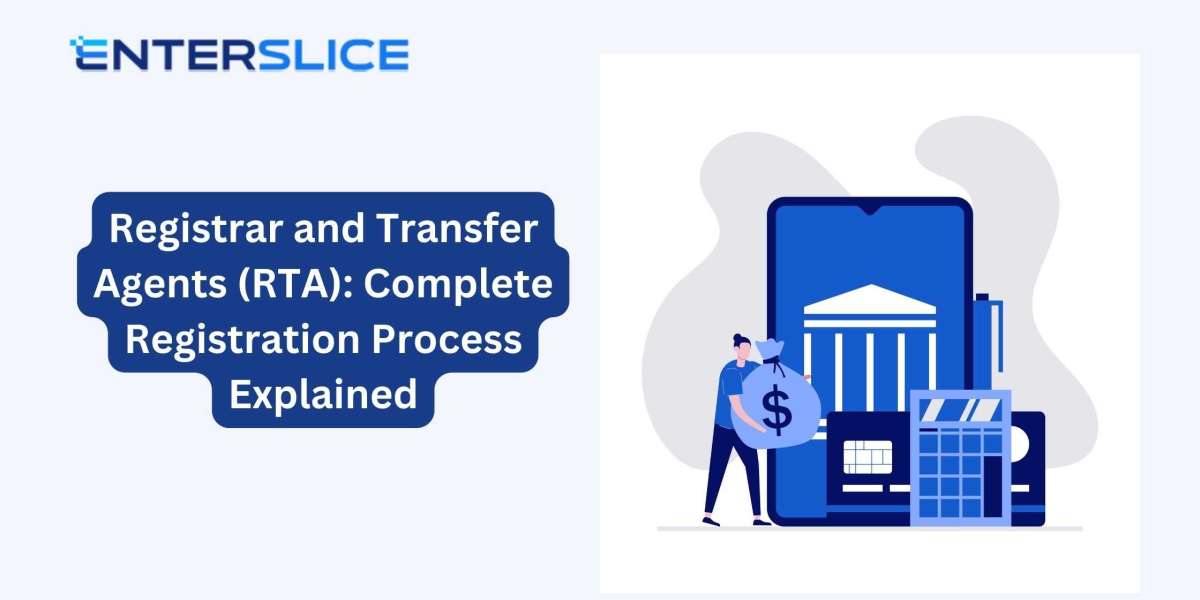Introduction
The Registrar and Share Transfer Agent (RTA) plays a pivotal role in the securities market, handling shareholder services such as transferring shares, updating shareholder records, managing dividends, and processing other corporate actions. In India, companies that wish to act as RTAs must undergo a detailed Registrar and Share Transfer Agent Registration process, which is overseen by the Securities and Exchange Board of India (SEBI).
If you’re a company or individual looking to become an RTA, it’s important to understand the step-by-step registration process, documentation, and regulatory requirements to ensure a smooth and compliant operation. This blog will guide you through the complete RTA registration process and provide key insights into the steps involved.
What is a Registrar and Transfer Agent (RTA)?
A Registrar and Transfer Agent (RTA) is an intermediary between a company and its investors. They manage various aspects of shareholder services, which include:
- Transfer of securities: RTA ensures the seamless transfer of shares from one investor to another.
- Record maintenance: RTAs keep an accurate and updated record of all shareholders and their holdings.
- Dividend processing: They ensure that dividends are distributed to the rightful investors.
- Handling corporate actions: RTAs manage the issuance of bonus shares, rights issues, and other corporate events.
Given the importance of the role RTAs play, they must be registered with SEBI before offering these services.
Step-by-Step Guide to Registrar and Share Transfer Agent Registration
Becoming an RTA is a detailed process and involves several steps to ensure compliance with SEBI regulations. Below is a simplified step-by-step guide to help you navigate the Registrar and Share Transfer Agent Registration.
Step 1: Understand the Eligibility Criteria
Before starting the registration process, ensure that your company meets the basic eligibility criteria to become an RTA. The prerequisites include:
- Incorporation: The entity applying for RTA registration must be a legal, registered company in India.
- Infrastructure: Adequate infrastructure, including hardware and software systems, is essential to process share transfers and maintain investor records.
- Experience and Expertise: A qualified and experienced team must manage the operations of the RTA. This includes professionals with expertise in handling securities and investor services.
- Financial Stability: Your company should have sound financial health and must be able to meet the capital adequacy requirements set by SEBI.
Step 2: Submit Application to SEBI
Once you ensure eligibility, the next step is to submit your application for RTA registration to SEBI. The application must be in the prescribed format and should include the following documents:
- Certificate of Incorporation: Proof of your company’s legal existence.
- Audited Financial Statements: Your company’s audited financials for the past three years.
- PAN Card: Proof of identity for your company and its directors.
- List of Directors and Key Personnel: This helps SEBI assess the experience and qualifications of the management team.
- Infrastructure and Systems Details: Documentation about the systems, technology, and physical infrastructure your company will use to operate as an RTA.
SEBI reviews the application and ensures that the applicant meets all regulatory requirements before proceeding to the next steps.
Step 3: Infrastructure Setup and System Requirements
To offer efficient services as a Registrar and Transfer Agent, your company must have a robust infrastructure that includes the following:
- Hardware and Software: Computers, servers, and software systems capable of handling high volumes of shareholder data, electronic transfers, and other operational tasks.
- Data Security: Security measures such as data encryption, backups, and access control must be in place to ensure confidentiality and integrity of investor records.
- Compliance with SEBI Guidelines: Your systems must meet the technical specifications set by SEBI and be capable of transmitting data to the Depository system (NSDL/CDSL).
Once the infrastructure is ready, you will be required to submit proof of the installation and readiness for inspection.
Step 4: Staff Training and Certification
Your staff must be adequately trained to handle Registrar and Transfer Agent duties. A three-day training program conducted by SEBI or other authorized agencies is mandatory. Additionally, your staff must obtain relevant certifications, such as:
- NISM Series VI - Depository Operations certification: This is essential for staff to understand the fundamentals of securities and depository operations.
- CPE Qualification: Continuing professional education (CPE) qualification ensures that the staff remains up to date with regulatory changes and best practices.
Proper training will help ensure that your RTA can efficiently carry out tasks like shareholder registration, transfer, dividend processing, and more.
Step 5: SEBI Inspection
Once your infrastructure is set up and staff is trained, SEBI will conduct an inspection of your operations. The inspection is crucial to verify whether your company meets all the requirements to function as an RTA.
SEBI will assess:
- Operational Readiness: Whether your systems, processes, and staff are capable of handling RTA services.
- Compliance with Regulations: Your company’s adherence to SEBI’s guidelines for RTAs.
- System Testing: SEBI may require you to run test transactions to ensure the smooth functioning of your systems.
If the inspection is successful, SEBI will approve your registration application.
Step 6: Agreement with Depositories
After SEBI approval, your company must enter into an agreement with the depositories (NSDL or CDSL) to facilitate the electronic transfer of securities. This agreement will allow your company to access depository systems and provide share transfer services electronically.
Step 7: Fees Payment
There are certain fees associated with the Registrar and Share Transfer Agent Registration process. These include:
- Application Fees: Fees payable to SEBI for processing the registration application.
- Annual Maintenance Fees: Fees for maintaining the registration, ensuring continued compliance with SEBI regulations.
The payment of fees ensures that your company is registered as an authorized RTA and can operate legally.
Step 8: Final Registration and Activation
Once all the requirements are completed and fees are paid, SEBI will grant you final RTA registration. At this point, your company will officially be authorized to offer Registrar and Share Transfer services to clients, investors, and companies.
Key Considerations for RTA Registration
- Compliance: Continuous compliance with SEBI guidelines is essential for maintaining your RTA registration.
- Technology: Ensure that your technology infrastructure is regularly updated to keep up with advancements and regulatory changes.
- Record-Keeping: Accurate and timely record-keeping is crucial to ensure smooth operations and avoid errors in share transfer or dividend payments.
- Monitoring and Auditing: Periodic audits will be conducted to ensure that your RTA operations comply with industry standards and regulations.
FAQs
1. What is the role of a Registrar and Transfer Agent (RTA)?
A Registrar and Transfer Agent (RTA) handles the transfer of securities, maintenance of shareholder records, dividend processing, and corporate actions for companies listed on the stock exchange. They play a vital role in ensuring smooth transactions between investors and companies.
2. How long does the RTA registration process take?
The entire Registrar and Share Transfer Agent Registration process can take several months, depending on the completeness of the application, infrastructure readiness, and SEBI’s review and inspection schedule.
3. Is there a specific qualification required for RTA registration?
Yes, your staff must undergo specialized training and obtain certifications like the NISM Series VI - Depository Operations exam to ensure they are equipped to manage RTA operations effectively.
Conclusion
Becoming a Registrar and Share Transfer Agent (RTA) involves a detailed and comprehensive process that includes meeting regulatory requirements, infrastructure setup, staff training, and compliance with SEBI guidelines. By following the steps outlined above, your company can successfully complete the RTA registration process and play a crucial role in managing shareholder services, transfers, and other securities-related activities.
Also, read other topics:







